Laser weapons: prospects in the air force. Part of 2
History laser weapons on aviation media begins from the 70s of the XX century. The American company Avco Everett has created a gas-dynamic laser with a power of 30-60 kW, the dimensions of which made it possible to place it on board a large aircraft. The KS-135 tanker aircraft was chosen as such. The laser was installed in 1973, after which the aircraft received the status of a flying laboratory and the designation NKC-135A. The laser installation was placed in the fuselage. A fairing is installed in the upper part of the hull, covering the rotating turret with a radiator and target designation system.
By 1978, the power of the onboard laser was increased by 10 times, and the supply of the working medium for the laser and fuel was also increased in order to ensure the emission time of 20-30 seconds. In 1981, the first attempts were made to hit a flying Rrebee unmanned target and a Sidewinder rocket of an air-to-air (in-class) missile with a laser beam that ended without result.
The aircraft was once again modernized and the tests were repeated in 1983. During the tests, five Sidewinder missiles flying in the direction of the aircraft at a speed of 135 km / h were destroyed from the NKC-3218A laser beam. In the course of other tests in the same year, NKC-135A laser destroyed the subsonic BQM-34A target, which at a low altitude simulated an attack on a US Navy ship.
Around the same time in which the NKC-135A was created, the USSR also developed a project for an aircraft carrying a laser weapon - the A-60 complex, which was described in the first part of the article. At the moment, the status of work on this program is unknown.
In 2002, a new program was opened in the USA - ABL (Airborne Laser) for placing laser weapons on an airplane. The main objective of the program is to create an air component of the antimissile defense system (ABM), to hit enemy ballistic missiles in the initial phase of flight, when the missile is most vulnerable. To do this, it was required to obtain a target hit range of order 400-500 km.
A large aircraft, the Boeing 747, was selected as the carrier, which after the modification was named prototype Attack Laser model 1-A (YAL-1A). Four laser systems were mounted on board — a scanning laser, a laser to ensure accurate target targeting, a laser to analyze the effect of the atmosphere on the distortion of the beam path, and the main high-energy combat high energy laser (HEL).
The HEL laser consists of 6 energy modules - chemical lasers with a working medium based on oxygen and metallic iodine, generating radiation from the 1,3 μm long wavelength. The guidance and focusing system includes 127 mirrors, lenses and light filters. The laser power is about one megawatt.
The program experienced numerous technical difficulties, costs exceeded all expectations and ranged from seven to thirteen billion dollars. During the development of the program, limited results were obtained, in particular, several training ballistic missiles with a liquid-propellant rocket engine and solid fuel were destroyed. The range of damage was about 80-100 km.
The main reason for the closure of the program can be considered the use of a deliberately unpromising chemical laser. The HEL laser ammunition is limited by the stocks of chemical components on board and amounts to 20-40 “shots”. During the operation of the HEL laser, an enormous amount of heat is released, which is brought to the outside with the help of a Laval nozzle, which creates a stream of heated gases that expires at a speed of 5 times the speed of sound (1800 m / s). The combination of high temperatures and fire-explosive components of the laser can lead to tragic consequences.
The same thing will happen with the Russian program A-60, if it is continued using the previously developed gas-dynamic laser.
However, the ABL program cannot be considered completely useless. During the course, it gained invaluable experience in the behavior of laser radiation in the atmosphere, developed new materials, optical systems, cooling systems and other elements that will be in demand in future promising projects of high-energy air-based laser weapons.
As already mentioned in the first part of the article, at present there is a tendency to abandon chemical lasers, in favor of solid-state and fiber lasers, for which there is no need to carry separate ammunition, and enough power supply provided by the laser carrier.
In the US, there are several programs of air-based lasers. One of such programs is the program for developing laser weapon modules for installation on combat aircraft and unmanned aerial vehicles - HEL, which was commissioned by General Atomics Aeronautical System and Textron Systems by the DARPA agency.
General Atomics Aeronautica, in conjunction with Lockheed Martin, is developing a liquid laser project. By the end of the 2007, the prototype showed a power of 15 kW. Textron Systems is working on its own prototype of a solid-state laser with a ceramic working medium called ThinZag.
The end result of the program should be a laser module with a power of 75-150 kW in the form of a container in which lithium-ion batteries, a liquid cooling system, laser emitters, as well as a system for converting beams, targeting and holding onto the target are installed. Modules can be integrated to obtain the required final power.
Like all high-tech programs to develop fundamentally new weapons, the HEL program faces delays in implementation.
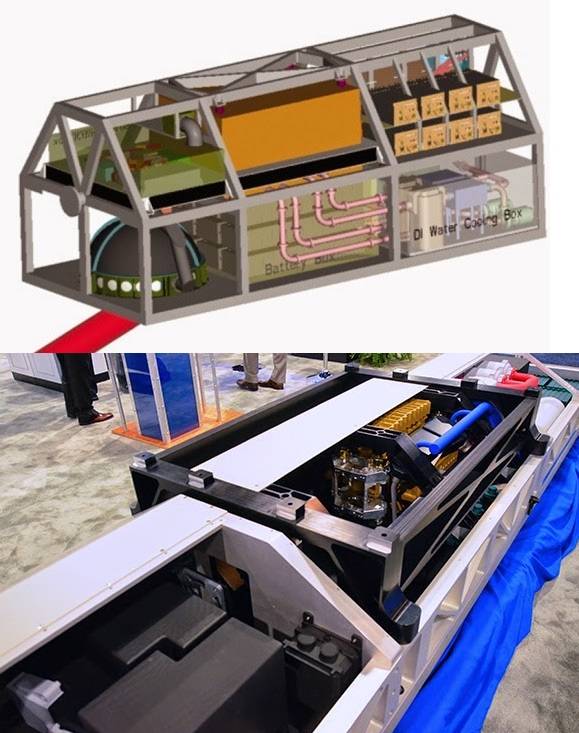
In 2014, Lockheed Martin and DARPA began flight tests of advanced Aero-adaptive Aero-optic Beam Control (ABC) laser weapons for aircraft carriers. As part of this program, technologies for targeting high-energy laser weapons in the 360 range of degrees are being tested on an experimental laboratory aircraft.
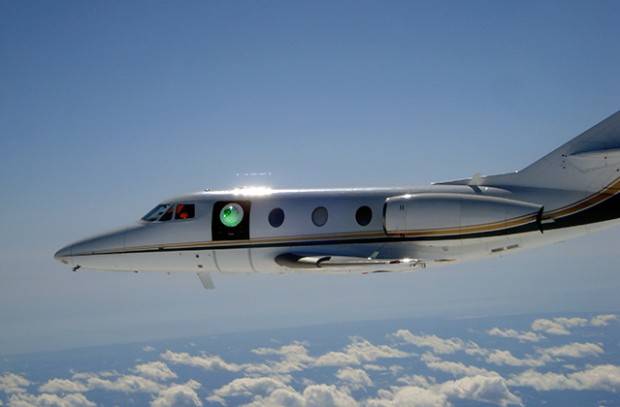
In the near future, the US Air Force is considering the integration of laser weapons on the newest Invisible Fighter F-35, and later on other combat aircraft. Lockheed Martin plans to develop a modular fiber laser with a power of about 100 kW and an optical-to-optical power conversion ratio in excess of 40%, followed by installation on the F-35. To do this, Lockheed Martin and the US Air Force Research Laboratory signed a contract for 26,3 million dollars. By 2021, Lockheed Martin should present to the customer a prototype combat laser, called the SHIELD, which can be mounted on fighters.
We consider several options for placing laser weapons on the F-35. One of them involves placing laser systems at the location of the lift fan in the F-35B or a large fuel tank, which is located in the same location in the F-35A and F-35C versions. For the F-35B, this would mean removing the possibility of vertical take-off and landing (STOVL mode), for the F-35A and F-35C, a corresponding decrease in flight range.
It is intended to use the drive shaft of the F-35B engine, which usually drives a lift fan, to drive a generator with a power above 500 kW (in STOVL mode, the drive shaft delivers up to 20 MW of shaft power to the lift-fan). Such a generator will occupy a part of the internal volume of the lift fan, the remaining space will be used to house the systems for generating laser, optics, etc.
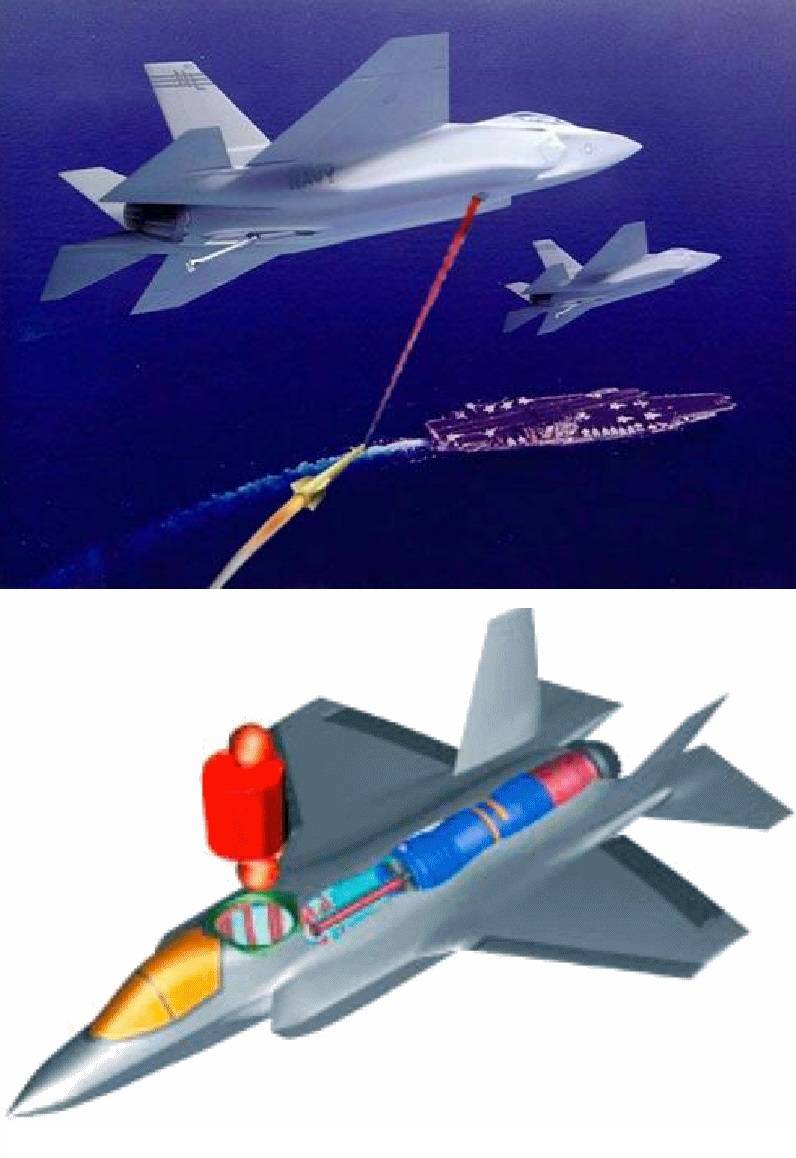
According to another version, the laser weapon and the generator will be conformally placed inside the hull among the existing units, with radiation output through the fiber-optic channel in the front part of the aircraft.
Another option is the possibility of placing a laser weapon in a hanging container, similar to that created in the framework of the HEL program, in case the laser of acceptable characteristics can be created in specified dimensions.
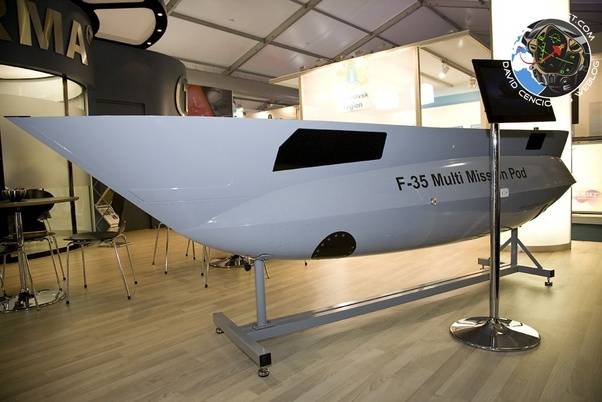
Anyway, in the course of the work, both the above-considered and completely different options for realizing the integration of laser weapons on the F-35 aircraft can be implemented.
In the US, there are several "road maps" for the development of laser weapons. Despite previously made statements by the US Air Force about obtaining prototypes for the 2020-2021 year, the more realistic dates for the emergence of advanced laser weapons on aircraft carriers can be considered 2025-2030 years. By this time, we can expect the appearance in service of combat aircraft of the “fighter” type of laser weapons with a power of about 100 kW, and by 2040, the power may increase to 300-500 kW.
The simultaneous presence of several laser weapons programs in the US Air Force indicates their high interest in this type of weapon, and reduces the risks for the Air Force if one or more projects fail.
What will be the consequences of the appearance on board of combat aircraft of tactical aviation laser weapons? Taking into account the capabilities of modern radar and optical guidance facilities, this, first of all, will allow the fighter to defend itself against incoming enemy missiles. If there is an on-board laser with a power of 100-300 kW, X-NUMX-2 air-to-air or ground-to-air missiles are supposedly destroyed by 4-XNUMX. In combination with CUDA type missile weapons, the chances of an aircraft equipped with laser weapons to survive on the battlefield will increase many times.
Maximum damage by laser weapons can be inflicted on missiles with thermal and optical guidance, since their performance directly depends on the functioning of the sensitive matrix. The use of optical filters for a certain wavelength will not help, since the enemy will most likely use different types of lasers, not all filtering. In addition, the absorption of laser energy by a filter on the order of 100 kW is likely to cause its destruction.
Missiles with a radar homing head will be hit, but at a shorter range. It is not known how the radio-transparent fairing will react to high-power laser radiation, perhaps it will be vulnerable to such an effect.
In this case, the only chance of the enemy, whose aircraft is not equipped with laser weapons, to “overwhelm” an opponent with so many air-to-air missiles, which the CUDA-type anti-missile cannon cannot intercept together.
The appearance of high-power lasers on airplanes will “nullify” all existing man-portable air defense missile systems (MANPADS) with the “Igla” or “Stinger” type, significantly reduce the capabilities of an air defense missile with optical or heat-guided missiles, will require an increase in the number of missiles in the salvo. Most likely, the laser can also hit the long-range ground-to-air missiles, i.e. their consumption when shooting at an airplane equipped with a laser weapon will also increase.
The use of anti-laser protection on air-to-air missiles and to ground-to-air missiles will make them heavier and larger, which will affect their range and maneuvering characteristics. You should not rely on a mirror coating, there will be practically no sense from it, completely different solutions will be required.
In the case of the transition of air combat in the near maneuverable, the aircraft with laser weapons on board will have an undeniable advantage. At close range, the laser beam targeting system will be able to aim the beam directly at the vulnerable points of the enemy aircraft — the pilot, optical and radar stations, control elements, and weapons on the external sling. In many ways, this eliminates the need for super-maneuverability, since no matter how you turn around, you still substitute one or the other side, and the displacement of the laser beam will have a deliberately higher angular velocity.
Equipping strategic bombers (missile-carrying bombers) with defensive laser weapons will significantly affect the situation in the air. In former times, an integral part of a strategic bomber was a rapid-firing aircraft cannon in the tail section of an aircraft. In the future, it was abandoned in favor of installing advanced electronic warfare systems. However, even an unobtrusive or supersonic bomber, if it is detected by enemy fighters, is highly likely to be shot down. The only effective solution now is the launch of rocket weapons outside the zone of the air defense and enemy aviation.
The appearance in the composition of the defensive armament of a bomber of laser weapons can radically change the situation. If a single 100-300 kW laser can be installed on a fighter, then a bomber of such complexes can be installed in the number of 2-4 units. This will allow self-defense at the same time from 4 to 16 of enemy missiles attacking from different directions. It is necessary to take into account the fact that the developers are actively working on the possibility of using laser weapons from several emitters together, for one purpose. Accordingly, the coordinated operation of laser weapons, with a total power of 400 kW - 1,2 MW, will allow a bomber to destroy attacking fighters from a distance of 50-100 km.
The growth of power and efficiency of lasers to 2040-2050 years can bring to life the idea of a heavy aircraft, like the type worked out in the Soviet project A-60 and the American ABL program. As a means of missile defense against ballistic missiles, it is unlikely to be effective, but equally important tasks can be assigned to it.
When a kind of “laser battery” is installed on board, including 5-10 lasers with 500 kW power - 1 MW, the total laser power that the carrier can concentrate on the target will be 5-10 MW. This will effectively deal with almost any air targets at a distance of 200-500 km. First of all, the DRLO, EW aircraft, refueling aircraft, and then manned and unmanned tactical aircraft will fall into the list of targets.
In the separate use of lasers, a large number of targets such as cruise missiles, air-to-air missiles or ground-to-air missiles can be intercepted.
What could the saturation of the airfield of battle with combat lasers lead to, and how will this affect the appearance of combat aviation?
The need for thermal protection, protective curtains for sensors, an increase in the weight and size characteristics of the weapons used, can lead to an increase in the size of tactical aviation, a decrease in the maneuverability of aircraft and their weapons. Light manned warplanes will disappear as a class.
In the end, it may turn out to be something like “flying fortresses” of the Second World War, wrapped in thermal protection, armed with laser weapons instead of machine guns and high-speed protected missiles instead of bombs.
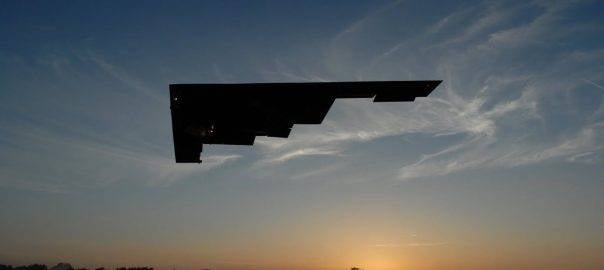
There are many obstacles to the implementation of laser weapons, but active investments in this direction suggest that positive results will be achieved. On the way almost 50 years long, since the beginning of the first work on aviation laser weapons, to the present day, technological capabilities have increased significantly. New materials, drives, power supplies have appeared, computing capacity has increased by several orders of magnitude, the theoretical base has expanded.
It remains to be hoped that the promising laser weapons will not only be with the United States and its allies, but will also go into service with the Air Force of the Russian Federation in time.
- Andrey Mitrofanov
- f-16.net, quora.com, airwar.ru, defence.ru, topwar.ru, army-technology.com
- Laser weapons: technology, history, status, prospects. Part of 1
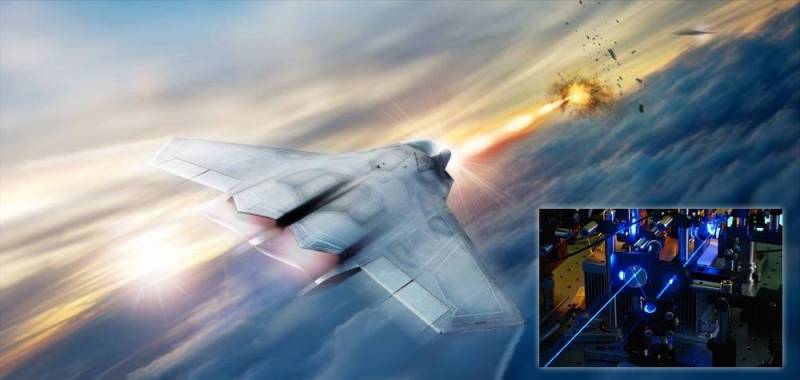
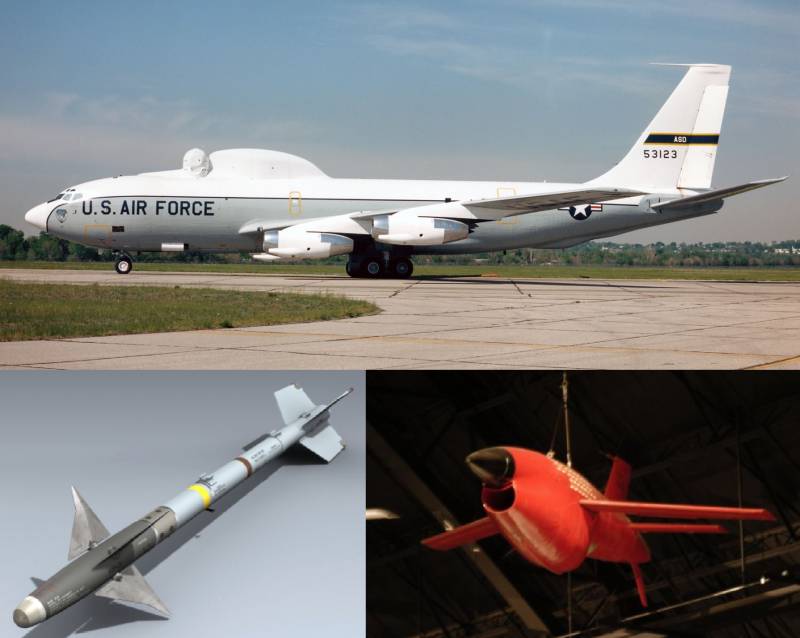
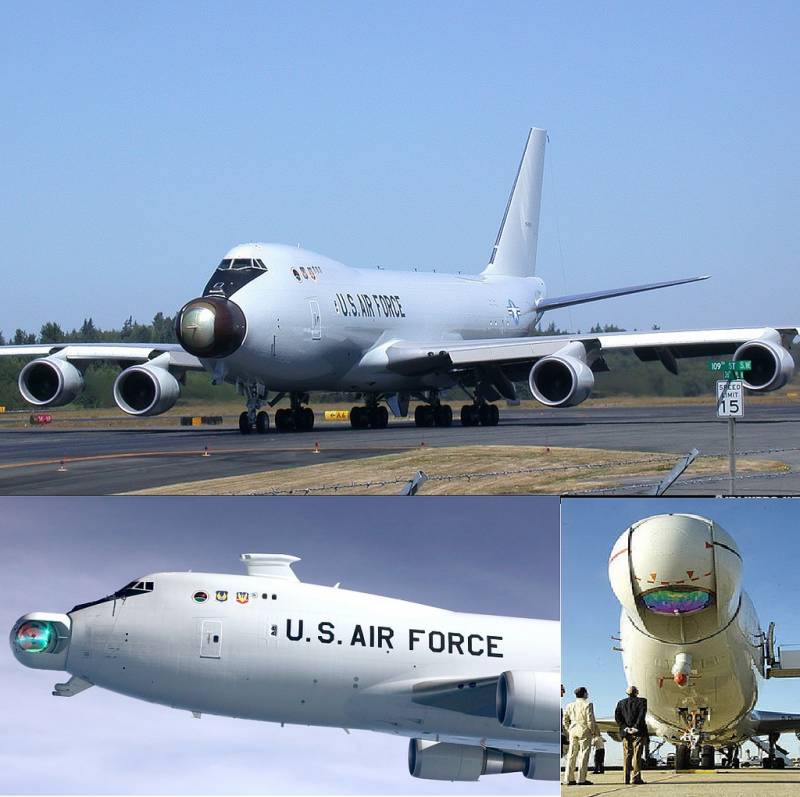
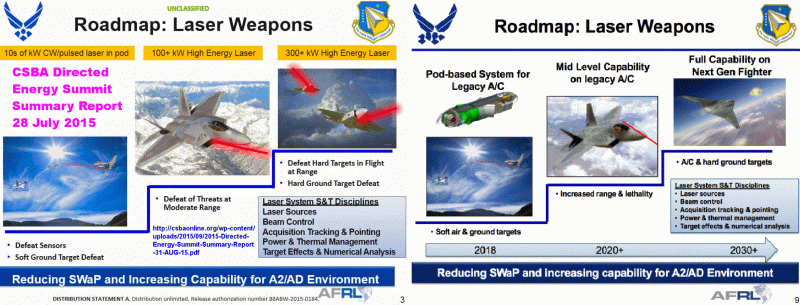
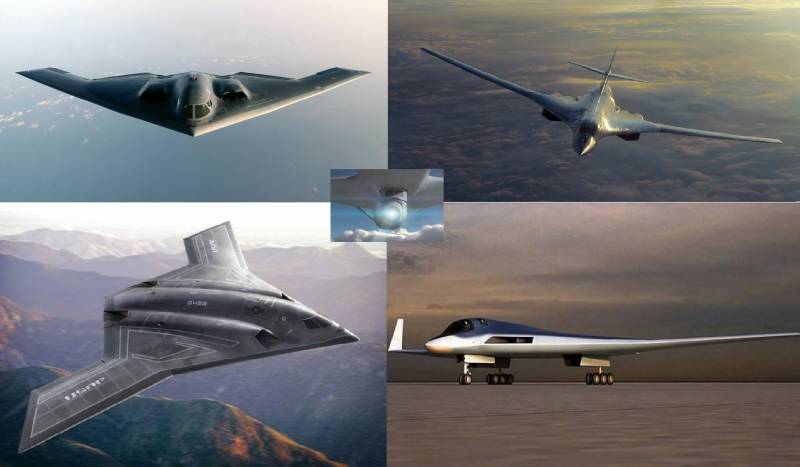
Information